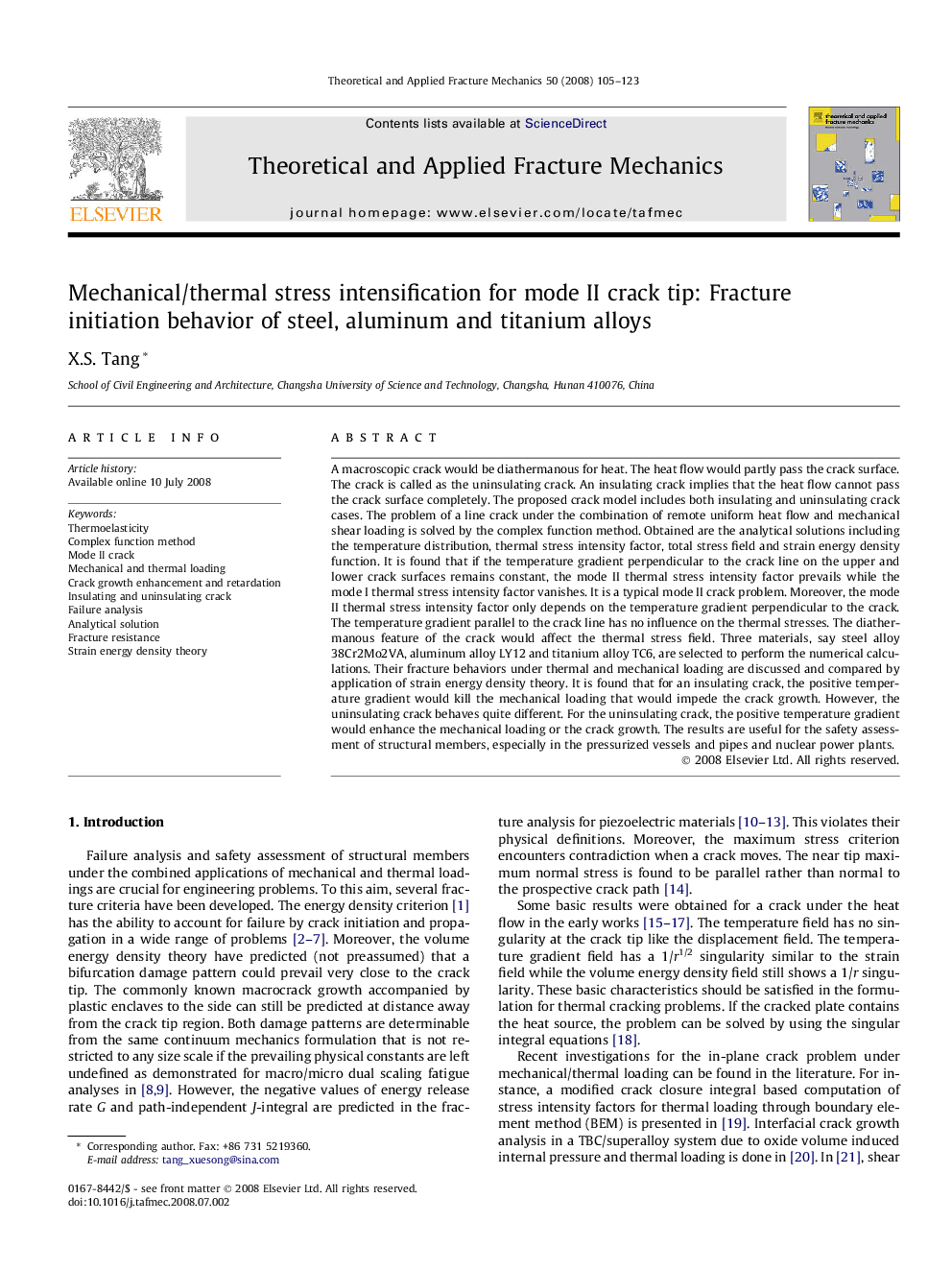| کد مقاله | کد نشریه | سال انتشار | مقاله انگلیسی | نسخه تمام متن |
|---|---|---|---|---|
| 807259 | 905489 | 2008 | 19 صفحه PDF | دانلود رایگان |

A macroscopic crack would be diathermanous for heat. The heat flow would partly pass the crack surface. The crack is called as the uninsulating crack. An insulating crack implies that the heat flow cannot pass the crack surface completely. The proposed crack model includes both insulating and uninsulating crack cases. The problem of a line crack under the combination of remote uniform heat flow and mechanical shear loading is solved by the complex function method. Obtained are the analytical solutions including the temperature distribution, thermal stress intensity factor, total stress field and strain energy density function. It is found that if the temperature gradient perpendicular to the crack line on the upper and lower crack surfaces remains constant, the mode II thermal stress intensity factor prevails while the mode I thermal stress intensity factor vanishes. It is a typical mode II crack problem. Moreover, the mode II thermal stress intensity factor only depends on the temperature gradient perpendicular to the crack. The temperature gradient parallel to the crack line has no influence on the thermal stresses. The diathermanous feature of the crack would affect the thermal stress field. Three materials, say steel alloy 38Cr2Mo2VA, aluminum alloy LY12 and titanium alloy TC6, are selected to perform the numerical calculations. Their fracture behaviors under thermal and mechanical loading are discussed and compared by application of strain energy density theory. It is found that for an insulating crack, the positive temperature gradient would kill the mechanical loading that would impede the crack growth. However, the uninsulating crack behaves quite different. For the uninsulating crack, the positive temperature gradient would enhance the mechanical loading or the crack growth. The results are useful for the safety assessment of structural members, especially in the pressurized vessels and pipes and nuclear power plants.
Journal: Theoretical and Applied Fracture Mechanics - Volume 50, Issue 2, October 2008, Pages 105–123